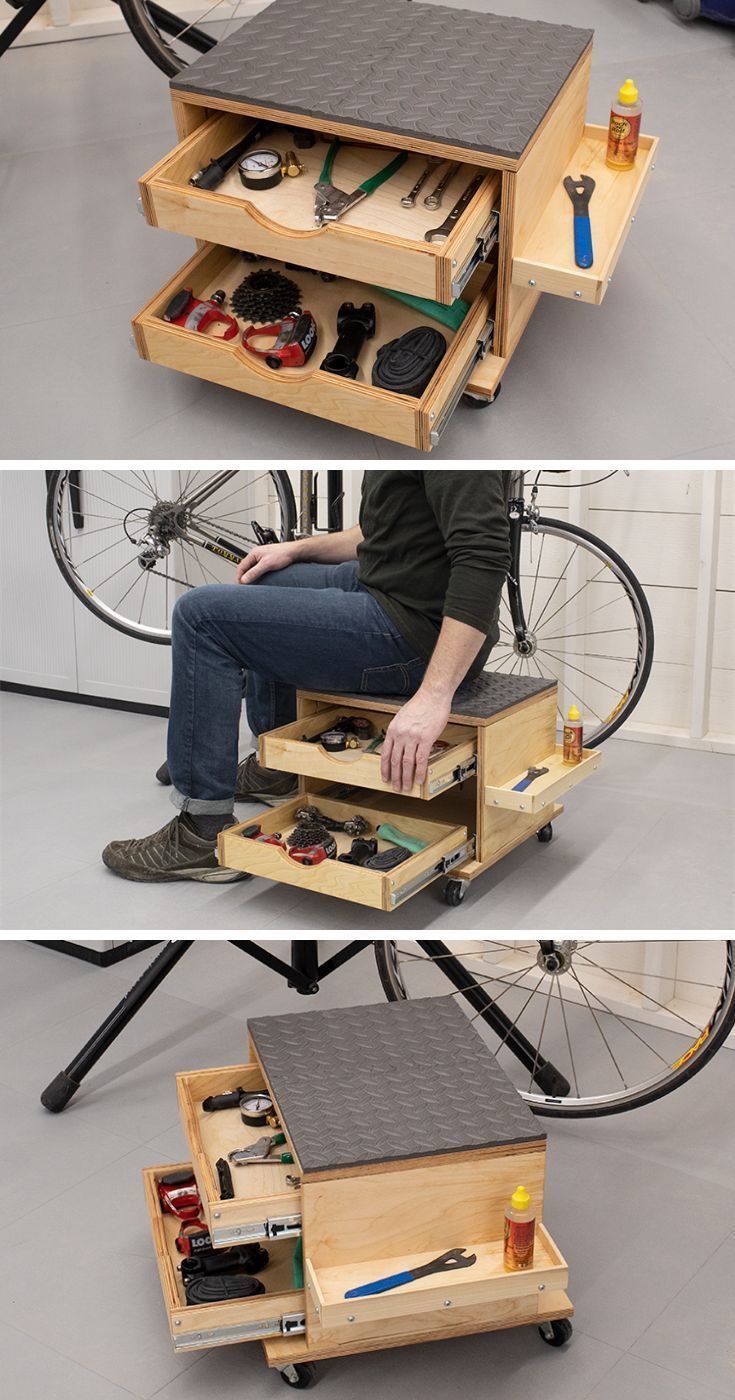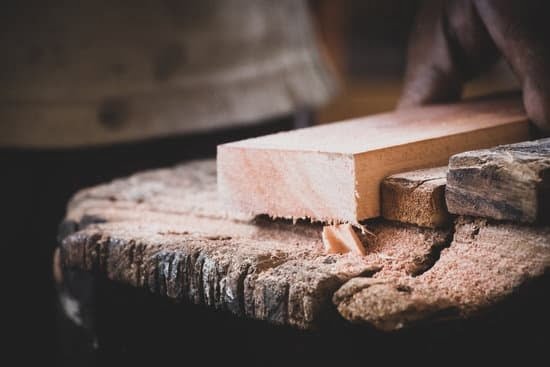A woodworking vice is an essential tool for any woodworking project, providing stability, control, and accuracy. Whether you are a professional woodworker or a hobbyist, knowing how to properly use a woodworking vice is crucial for successful and safe woodworking endeavors. In this article, we will explore the various aspects of using a woodworking vice, from its advantages to the different types available in the market.
We will also discuss how to choose the right vice for your project, install it correctly, understand its components, and use it effectively with step-by-step instructions. Additionally, we will touch upon important safety precautions that should be taken while using a woodworking vice.
Woodworking vices are designed specifically for holding workpieces securely in place while shaping, cutting, drilling, or assembling them. By firmly gripping the workpiece, these vices provide stability and prevent movement during various woodworking operations.
This not only allows for greater precision and accuracy in the work but also ensures personal safety by minimizing the risk of accidents caused by slipping or shifting workpieces. Whether you are working on small intricate projects or larger pieces of furniture, utilizing a woodworking vice can greatly enhance your woodworking experience.
Using a woodworking vice offers several advantages that contribute to improved efficiency and quality in woodworking projects. Firstly, it provides enhanced accuracy by firmly holding the workpiece in place and preventing unwanted movements. This makes it easier to achieve precise cuts, drill holes at specific locations, or execute intricate designs with confidence.
Secondly, a woodworking vice enhances stability during intricate tasks such as carving or shaping delicate pieces of wood. This stability enables better control over the tools being used and minimizes mistakes or damage to the workpiece. Lastly but arguably most importantly, using a woodworking vice improves safety by securely locking down the workpiece and reducing the chances of accidents or injuries caused by unexpected movements.
Overall, understanding how to use a woodworking vice is essential for every woodworker looking to achieve precise results and create safe work environments. In the following sections, we will delve deeper into the different types of woodworking vices available, how to choose the right one for your specific project, and step-by-step instructions on proper installation and usage.
Additionally, we will discuss important safety precautions that should always be followed when working with a woodworking vice. With this comprehensive guide, you will gain the necessary knowledge and skills to effectively use a woodworking vice in all your woodworking endeavors.
Advantages of Using a Woodworking Vice
Woodworking projects often require precision and stability to ensure successful outcomes. Using a woodworking vice can provide numerous advantages that contribute to improved accuracy, control, and safety in woodworking endeavors.
One of the key benefits of utilizing a woodworking vice is the enhancement it provides to accuracy. When working with small or intricate pieces, clamping them securely in a vice allows for precise and controlled movements. This helps in achieving tight joints, accurate measurements, and clean cuts. The stability provided by a woodworking vice also eliminates the risk of the workpiece shifting or moving during the process, ensuring consistent results every time.
In addition to accuracy, a woodworking vice enhances stability during various woodworking tasks. Whether you are sawing, chiseling, or routing, clamping your workpiece in a vice eliminates unwanted movement and vibration. This stability not only improves the quality of your work but also reduces the chances of accidents or injuries caused by slipping workpieces.
Furthermore, using a woodworking vice ensures safety by firmly securing the workpiece in place. This reduces the risk of accidental slips or mishaps while operating power tools or hand tools. By firmly gripping the workpiece, you can maintain better control over it and minimize the potential for injuries.
| Advantages of Using a Woodworking Vice |
|---|
| Enhances Accuracy |
| Improves Stability |
| Ensures Safety |
Types of Woodworking Vices
Woodworking vices come in various types, each designed to cater to different woodworking needs. Understanding the different types of woodworking vices available in the market can help you make an informed decision and choose the one that best suits your projects. Here are some of the most common types of woodworking vices:
- Front Vise: This type of vice is typically mounted on the front edge of a workbench and is commonly used for holding large pieces of wood or timber in place. The front vise features two jaws that can be adjusted and tightened using a screw mechanism, allowing for secure clamping. It provides stability and control during tasks such as sawing, planing, or chiseling.
- Tail Vise: Unlike the front vise, a tail vise is located at the end or tail of a workbench. It operates similarly to a front vise but offers greater flexibility when working with longer pieces of wood or hard-to-reach areas on the workbench. The tail vise can be easily adjusted to hold objects horizontally or vertically, providing versatility and convenience.
- Bench Vise: A bench vise is a versatile option that can be mounted on any suitable work surface other than just a dedicated workbench. It offers excellent stability and rigidity, making it ideal for heavy-duty tasks such as shaping or carving solid wood blocks. Bench vises often feature larger jaws that provide a strong grip on workpieces.
- Miter Vise: As the name suggests, miter vises are specifically designed for holding mitered cuts or angled joints securely during assembly or finishing stages. Miter vises have jaws with adjustable angles to accommodate different angles required for various woodworking projects like picture frame making.
- Quick-Release Vise: This type of vice is designed for convenience and efficiency in woodworking tasks. Quick-release vises allow for rapid and effortless clamping and unclamping of workpieces, eliminating the need for time-consuming manual adjustment. They are especially useful when working on multiple projects or frequently changing workpieces.
When selecting a woodworking vice, consider factors such as the type of projects you typically undertake, the size of your workbench or workspace, and your personal preferences. It’s important to choose a vice that offers stability, durability, and ease of use to enhance your woodworking experience.
Choosing the Right Woodworking Vice for Your Project
When it comes to woodworking, having the right tools and equipment is essential for achieving successful and efficient results. One crucial tool in any woodworker’s arsenal is a woodworking vice. However, with so many different types of woodworking vices available in the market, choosing the right one for your specific project can be a daunting task. This section will offer a step-by-step guide on selecting the appropriate woodworking vice for your project.
- Consider the project size: The first step in choosing a woodworking vice is to consider the size of your project. Different vices are designed to handle various workpiece sizes. For smaller projects, a bench-mounted or portable vice may be sufficient, while larger projects may require a front or tail vice attached to a workbench.
- Assess the type of workpiece: The type of workpiece you will be working on also plays a significant role in determining the suitable woodworking vice. If you are primarily working with delicate or irregularly shaped materials, a woodworking vice with adjustable jaws or soft grips may be ideal. On the other hand, if you frequently work with heavy and sturdy materials, a heavy-duty or quick-release vice may be more suitable.
- Personal preferences: It’s essential to take your personal preferences into account when choosing a woodworking vice. Consider factors such as ease of use, durability, and additional features like swivel bases or built-in pipe clamps that may enhance your workflow. Reading reviews and seeking recommendations from experienced woodworkers can also provide valuable insights into different brands and models.
By following these steps, you can ensure that you select the right woodworking vice that matches your project requirements and personal preferences. Remember that investing in a high-quality vice will not only make your woodworking projects more efficient but also ensure safety and precision during clamping operations.
| Factors to Consider | Considerations |
|---|---|
| Project Size | Determine the appropriate vice size based on the project’s scale and dimensions. |
| Type of Workpiece | Choose a vice that can securely hold and accommodate the material you are working with. |
| Personal Preferences | Take into account ease of use, durability, and additional features that align with your preferences. |
How to Properly Install a Woodworking Vice
Installing a woodworking vice properly is crucial for achieving accurate and secure clamping. Whether you are a beginner or an experienced woodworker, following the necessary steps can ensure that your vice is securely and accurately installed on your workbench or table.
- Positioning the Vice: Start by determining the ideal location for your woodworking vice on your work surface. Consider factors such as accessibility, ergonomics, and the size of your projects. Place the vice in a position that allows you to have comfortable access to it while providing enough space for maneuvering your workpiece.
- Aligning the Vice: Once you have determined the position, align the jaws of the vice with the edge of your work surface. Make sure that they are flush against each other and parallel to avoid any misalignment issues during clamping.
- Securing the Vice: After aligning the jaws, place the mounting brackets of the vice on top of your workbench or table. Use screws or bolts that are appropriate for your type of work surface to secure the brackets firmly in place. Ensure that they are tightened securely to provide stability during use.
- Checking Stability and Alignment: Once you have installed the woodworking vice, double-check its stability and alignment before using it. Apply some pressure on both ends of the jaws to test if there is any movement or wobbling. If necessary, adjust and retighten any screws or bolts to eliminate any instability.
By following these steps, you can properly install a woodworking vice on your workbench or table, ensuring optimal performance and safety during your woodworking projects. Remember to always refer to your specific vice’s manufacturer guidelines for installation instructions as they may vary slightly depending on the model and design.
Understanding the Components of a Woodworking Vice
Breakdown of the Components
A woodworking vice consists of several components that work together to provide a versatile and reliable clamping mechanism. Understanding these components is essential for properly using a woodworking vice. The main components of a typical woodworking vice include the jaw, handle, guide rods, and spindle.
The jaw is the part of the vice that holds and secures the workpiece in place. It typically consists of two parallel metal plates that can be tightened or loosened to accommodate different sizes of workpieces. The jaws are often lined with materials such as rubber or wood to protect the workpiece from damage.
The handle, also known as the crank handle or rotating handle, is used to open and close the vice. By rotating the handle clockwise or counterclockwise, you can adjust the position of the jaws and tighten or loosen their grip on the workpiece. The handle should be sturdy and easy to grip for comfortable operation.
Guide rods are essential for keeping the jaws aligned and maintaining stability during clamping. These rods run through holes in both jaws and help ensure that they move in unison when tightening or releasing the vice. Guide rods may be made of steel or other durable materials.
Lastly, there’s the spindle or screw mechanism, which connects the handle to one jaw and allows for controlled movement during clamping. By turning the handle, you rotate the spindle, which moves one jaw towards or away from another. This precise adjustment enables you to apply varying levels of pressure on different types of workpieces effectively.
Working Together for Efficient Clamping
All these components come together seamlessly to create a reliable clamping mechanism in a woodworking vice. When you rotate the crank handle clockwise, it drives the spindle to move forward, pushing one jaw towards another with controlled force. As a result, your workpiece gets securely held between these jaws.
The guide rods play an essential role in keeping the jaws aligned and parallel during clamping. They ensure that both jaws move symmetrically, allowing for accurate and even pressure distribution across the workpiece. The guide rods also help prevent any unwanted shifting or misalignment that could affect the stability of your project.
Additionally, some woodworking vices may feature additional components such as quick-release mechanisms or swivel bases, which offer added convenience and versatility in certain situations. These extra features allow for quick adjustments or rotation of the vice, making it easier to accommodate different workpieces and angles.
Understanding how each component functions and interacts with others will enable you to utilize a woodworking vice more effectively. With a good grasp of these parts’ roles, you can make precise adjustments, maintain stability, and ensure a secure grip on your workpiece for successful woodworking projects.
Step-by-Step Guide
Step 1: Opening and Closing the Vice
To begin using a woodworking vice, the first step is to open and close the jaws of the vice. Locate the handle on the vice and turn it counterclockwise to loosen the jaws. This will allow you to slide your workpiece between the jaws.
Once your workpiece is in place, turn the handle clockwise to tighten the jaws securely around it. Make sure to tighten the jaws enough so that your workpiece remains stable during use, but be careful not to overtighten and damage your material.
Step 2: Positioning the Workpiece
After closing the vice around your workpiece, you’ll need to position it properly for optimal woodworking. Take into consideration both your comfort and safety while positioning your workpiece. Place it in a way that allows you easy access to make necessary cuts or measurements without compromising stability or increasing physical strain.
Consider your project requirements when deciding where and how to position your workpiece within the vice. Depending on what you’re working on, you may want to position it vertically, horizontally, or at an angle. Experiment with different positions until you find one that works best for your specific project.
Step 3: Adjusting Clamping Pressure
One of the advantages of using a woodworking vice is its ability to provide customizable clamping pressure. The amount of pressure needed depends on various factors such as wood type, project requirements, and personal preferences.
Most woodworking vices have a spindle that allows for easy adjustment of clamping pressure. Turn this spindle clockwise to increase pressure or counterclockwise to decrease it. It’s important not to apply excessive force when adjusting the pressure as this can lead to damage or distortion of your workpiece.
Throughout your woodworking project, regularly evaluate if any adjustments are needed in terms of clamping pressure. This will help ensure that your workpiece remains secure and stable, providing you with the accuracy and control necessary for a successful outcome.
Safety Precautions While Using a Woodworking Vice
When it comes to using a woodworking vice, maintaining a strong focus on safety is of utmost importance. Without proper precautions, accidents can happen, leading to injuries and damage to your workpiece. By following these safety guidelines, you can ensure that your woodworking projects are not only successful but also safe.
First and foremost, always wear appropriate protective equipment when using a woodworking vice. Safety goggles will protect your eyes from any flying debris or wood chips that may be generated during the clamping process. Additionally, consider wearing gloves to provide an extra layer of protection for your hands. This is especially important when adjusting the clamping pressure or handling rough-edged workpieces.
Maintaining a safe working environment is equally crucial. Keep your workspace clean and organized, removing any unnecessary tools or materials that could cause tripping hazards or interfere with your movement around the workbench. Pay attention to the placement of power cords and ensure they are away from the vice’s moving parts.
Another important aspect of safety is avoiding common mistakes that can lead to accidents. Never use excessive force when tightening the vice or adjusting its components. Doing so may cause undue stress on the vice’s mechanisms or result in damage to your workpiece. It is essential to understand the limits and capabilities of your chosen woodworking vice to prevent accidents caused by misuse.
In conclusion, using a woodworking vice can vastly improve both the accuracy and safety of your woodworking projects. By following these safety precautions – wearing protective equipment, maintaining a clean workspace, and avoiding common mistakes – you can ensure that your woodworking endeavors are not only successful but also injury-free. Remember, taking the necessary precautions before putting any project into action will help you enjoy this timeless craft for years to come.
Frequently Asked Questions
How do you use a wood vise?
A wood vise is a valuable tool used in woodworking to hold pieces of wood securely during various tasks such as sawing, drilling, and shaping. To use a wood vise, start by identifying the specific area of the workbench where you plan to mount it. Ensure that the surface is sturdy and can withstand the pressure applied by the vise. Once you have chosen the location, position the vise so that the movable jaw or front jaw is facing outward, away from you.
This makes it easier to adjust and secure your workpiece conveniently. To clamp an object in the vise, open it up by loosening the handle or turning the spindle counterclockwise until there is enough space for your workpiece. Place your material between the jaws, ensuring that it sits flush against them. Tighten the handle or turn the spindle clockwise to apply pressure and grip your workpiece firmly.
What is the best position for a woodworking vise?
The best position for a woodworking vise depends on personal preference and specific needs. However, a common recommendation is to mount it towards the front edge of your workbench to allow for maximum stability and accessibility while working on projects.
Placing it in this position offers better control over your materials and allows for greater maneuverability around larger pieces of wood being held in the vise. Additionally, having the woodworking vise closer to you minimizes strain on your body when applying pressure or manipulating your workpiece during various tasks.
How do you mount a woodworking vise?
Mounting a woodworking vise typically involves securing it firmly to a sturdy workbench or appropriate surface using screws or bolts provided with the vise itself. Start by selecting an ideal location on your workbench based on personal preference and intended usage. Place your woodworking vise upside down on this selected spot to mark where you want to drill holes for mounting screws or bolts; make sure to align it with one edge of your bench if desired. With a drill bit suitable for screw holes, drill the necessary holes in the workbench.
Position the vise back onto the bench and use screws or bolts to secure it tightly into place. Make sure the vise is aligned parallel to the edge of the workbench for optimal performance. Test its stability by applying some pressure with your hand before using it extensively. Adjustments may be required, such as tightening or repositioning, to achieve a firm and secure mount for your woodworking vise.

Hi everyone! I’m a woodworker and blogger, and this is my woodworking blog. In my blog, I share tips and tricks for woodworkers of all skill levels, as well as project ideas that you can try yourself.





